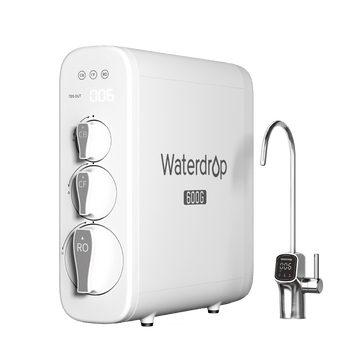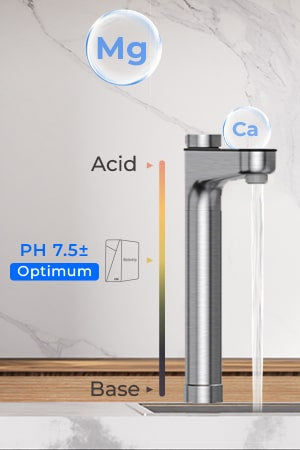Does Reverse Osmosis Remove Heavy Metals?
What Is Reverse Osmosis?
How Do Heavy Metals Enter Drinking Water?

Health Risks of Heavy Metals in Drinking Water
- Neurological Damage: Lead and mercury are particularly harmful to the nervous system, causing developmental delays in children and cognitive issues in adults.
- Kidney and Liver Damage: Metals like cadmium and mercury can accumulate in vital organs, causing long-term damage and impairing their function.
- Cancer: Both arsenic and cadmium are carcinogens, meaning they can increase the risk of certain cancers when consumed over a long period.
- Bone Health: Cadmium exposure has been linked to bone density loss and an increased risk of fractures and osteoporosis.
- Reproductive Health: Heavy metals like lead and mercury can affect fertility and cause developmental issues in offspring.
The Effectiveness of Reverse Osmosis in Lowering Heavy Metals

- Lead: Lead is one of the most harmful heavy metals in water, especially in older plumbing systems. Reverse osmosis is highly effective at lowering lead levels by up to 99%, making it an excellent choice for homes with aging pipes or those in areas where lead contamination is a concern.
- Arsenic: Arsenic contamination is another significant issue in some groundwater sources. Reverse osmosis can effectively lower arsenic levels by 95% to 99%, providing peace of mind for people living in areas with high arsenic levels in their drinking water.
- Mercury: Mercury is a toxic metal that can accumulate in the kidneys and nervous system. Reverse osmosis can lower mercury concentrations by up to 95%, which is particularly beneficial for individuals concerned about mercury exposure.
- Cadmium: This heavy metal is commonly found in industrial areas and can damage the kidneys over time. Reverse osmosis is highly effective in lowering cadmium levels by 90% to 98%, providing protection against its harmful effects.
Why Choose Reverse Osmosis to Lower Heavy Metals?
- Comprehensive Filtration: Reverse osmosis is highly effective at filtering out a wide range of contaminants, not just heavy metals. It also reduces chlorine, fluoride, and other harmful substances, ensuring cleaner water.
- Affordable and Easy to Use: Reverse osmosis systems are available at various price points, making it an accessible option for many households. The installation process is straightforward, and regular maintenance is simple.
- Highly Efficient: Many modern reverse osmosis systems come with advanced filters and membranes that ensure optimal filtration efficiency, lowering heavy metal levels while maintaining water quality.
- Long-Term Benefits: By investing in a reverse osmosis system, you can ensure that your household has access to cleaner, safer drinking water for years to come. The health benefits of drinking water free from heavy metals are invaluable.
The Role of a Heavy Metal Detox

- Detoxifying foods: Foods like cilantro, garlic, and chlorella are known to support the body’s ability to eliminate heavy metals naturally.
- Chelation therapy: This medical process involves using chelating agents to bind to heavy metals and help eliminate them from the body.
- Hydration: Drinking clean, purified water—like that from a reverse osmosis system—helps the body flush out toxins more effectively.
Conclusion
EXCEED EWG HEALTH GUIDELINES
30 Total Contaminants in Your Water
Water Provider
Fruitland Water Special Service DistrictPopulation Affected
120,000Water Source
Ground water























































